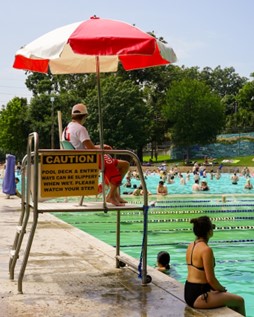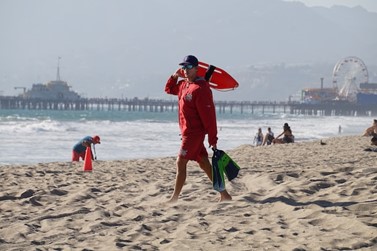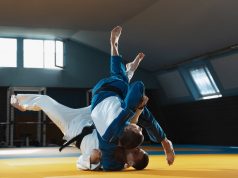Matthew Blaisdell of Pittsburgh has experience working as a lifeguard and pool manager in his local community. In the following article, Matthew Blaisdell discusses lifeguarding workout routines that not only builds unyielding strength but also hones endurance fit for a lifeguard’s call of duty.
Matthew Blaisdell explains that without supreme physical fitness, lifeguards couldn’t perform rescues safely and efficiently. In fact, they’d be a hindrance, rather than the irreplaceable help they are. So, the brave professionals who take on this position are meticulous with their workouts, prioritizing muscles and activities that ensure strength and endurance in and out the water.
Matthew Blaisdell of Pittsburgh also notes that from swimming, the main exercise for any lifeguard, to rowing, an activity prioritized by natural water lifeguards, individuals prepare themselves every day for this physically demanding job by following a strict regime.
Matthew Blaisdell Explains the Primary Exercise for Lifeguards
In the exercise space, nothing is more important than swimming for lifeguards. Being able to swiftly enter the water and rapidly swim to the person in need of assistance is one of the most vital responsibilities such professionals have. So, they focus on swimming, honing their skills as much as possible.
Generally speaking, lifeguards begin with a warm-up before skills training, wherein they pay attention to stroke length, specific rescue moves, and breathing techniques.
While most may assume lifeguards spend their time swimming at a race pace, this isn’t always true. Instead, they tend to keep a steady, endurance-type pace.
Matthew Blaisdell of Pittsburgh says that when lifeguards are performing in-the-water sprint training, they also couple it up with some strength training or jog a few miles. Beach lifeguards, however, often prioritize row-swim or swim-run workouts over straight swimming sessions.
Running Holds Particular Importance for Open Water Patrol
Pool lifeguards may not involve a ton of running, but where there’s shallow water, running through it is a must. And due to the extra muscle required to wade through said water at speed, plus the potential for racing across the sand as a beach lifeguard, running plays a core role in the typical lifeguard’s workout regime.
Matthew Blaisdell of Pittsburgh says that covering land distance before hitting the water is no small feat, with many lifeguard towers set relatively far back from the water line. Thus, most lifeguard positions come with running prerequisites, which are tested during selection processes.
Open water lifeguards do 30-minute runs between 75% and 85% of their maximum heart rates several times a week, often combining it with 15- or 30-second sprints to improve endurance on land and in the ocean.
Rowing is Vital for Natural Water Lifeguarding
Some lifeguards must be able to rapidly row a boat to and from people in need (usually those working around natural, open water). Thus, professionals add this functional exercise into their specialized routine.
That said, even those who don’t need to row often use the exercise anyway for developing cardiovascular endurance and upper body strength — two key attributes for effective lifeguarding.
Sources state that many head to the gym for this portion of their training, using the rowing machine as a warmup before strength exercises or as a complete cardio routine. Beach lifeguards are known to combine rowing and swimming in the same session to target all the muscles needed to perform their jobs.

Extrication Exercises Prove Essential for Safe Water Rescues
According to industry experts, “extrication” is the term used to describe the movements lifeguards must take when pulling someone out of the water. As a lifesaving skill, it is one of the most crucial exercises professionals can practice.
Designed to ensure lifeguards are comfortable, strong enough, and efficient with equipment, extrication drills require a group of lifeguards using backboards and rescue tubes. One person plays the swimmer in distress, while at least one individual practices reaching the person rapidly before towing them to safety.
Coaches time how long each exercise takes, and lifeguards aim to beat their record as often as possible.
Focusing Attention on Core, Back, and Leg Muscles Through Compound Exercises
Lifeguarding exerts stress on the entire body, but when designing their workouts, experts focus on their core, back, upper body, and leg muscles through compound movements.
Matthew Blaisdell of PA explains that these exercises train more than one muscle group at a time, like push-ups, planks, pull-ups, deadlifts, and dips. Push-ups and planks target the back, chest, abdominal muscles, shoulders, quads, and glutes, whereas the latter target the lower body.
Often, beach lifeguards perform the exercises in the sand for a workout more akin to their daily operations.









